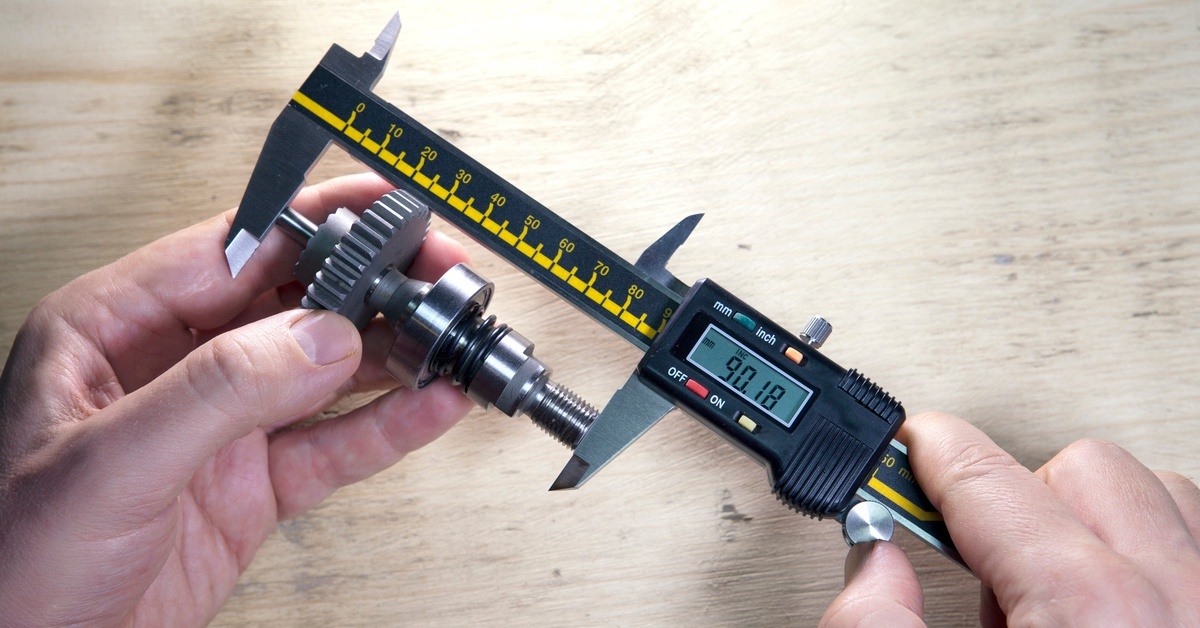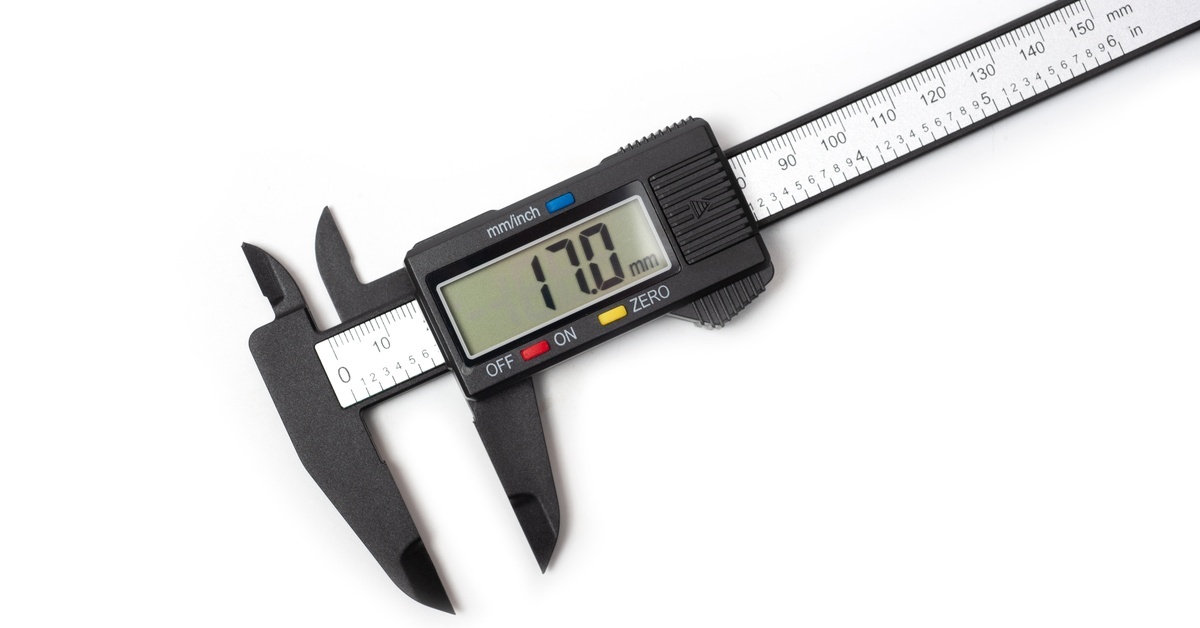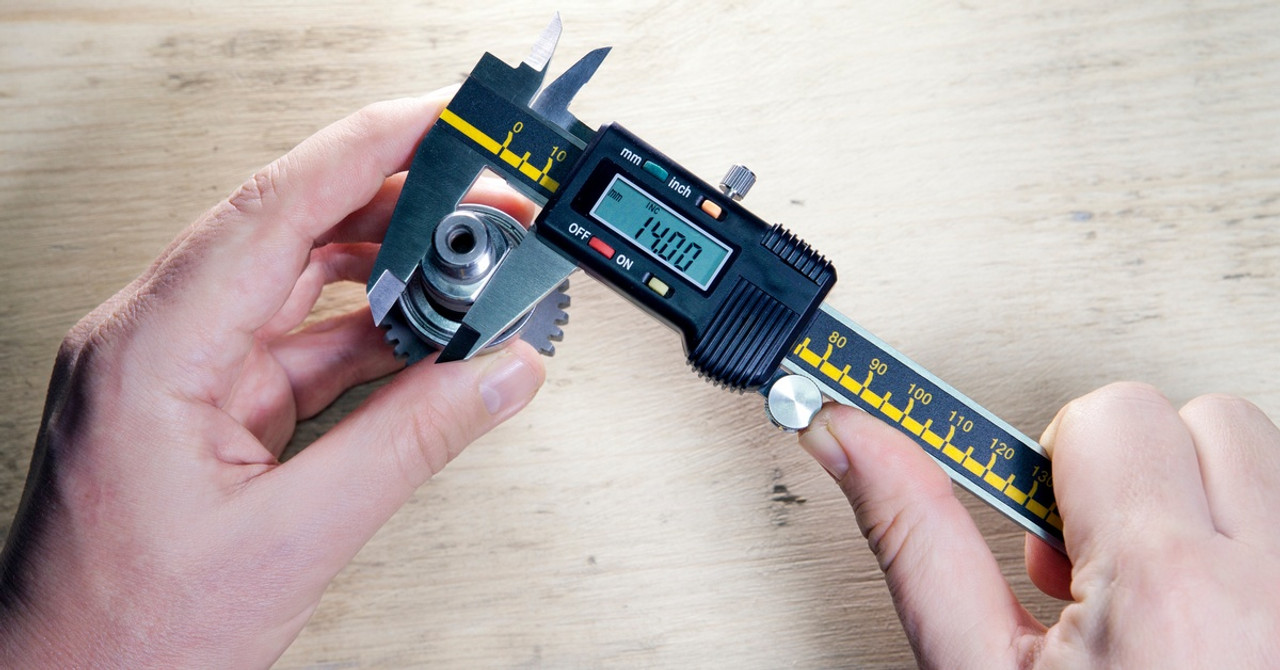Digital calipers are crucial tools for manufacturers. These precision instruments simplify measuring processes, delivering the speed and accuracy that are essential to maintaining high-quality standards in the manufacturing sector. Whether you’re working on intricate designs or mass production, having the right digital calipers can significantly affect your workflow and end product.
Learn what digital calipers are, how they differ from other types, and how you can optimize your measurements and data with this guide on how to choose the right digital calipers.
The Difference in Digital Calipers
Digital calipers set themselves apart from tools like standard, dial, and vernier calipers by offering precise, fast, and easy-to-read measurements. Unlike manual tools, digital calipers eliminate the risk of human error in reading scales. They display measurements clearly on an electronic screen, which is especially useful when working on detailed or time-sensitive projects.
Traditional vernier calipers, for instance, require reading scales with fine gradations, which can lead to mistakes if not checked thoroughly. Dial calipers are slightly easier to read than vernier ones, but they still require manual tracking and interpretation.
Digital calipers revolutionize this process by providing instant readings without any guesswork. Many of these devices even come with additional features like the ability to toggle between measurement units and store data. This streamlined functionality makes digital calipers the preferred choice for modern manufacturers seeking efficiency and reliability. Whether you’re measuring internal or external dimensions, depth, or step measurements, digital calipers outperform their traditional counterparts in terms of user-friendliness and precision.
Key Features To Consider
There are several factors to consider when choosing the right digital calipers for your manufacturing workflows. Accuracy is one of the most important factors to assess. For high-precision tasks, look for calipers with tight tolerances to make sure each measurement is spot-on.
Resolution is another critical feature to examine. This refers to the smallest increment a caliper can display. While accuracy ensures your device measures the exact value, resolution lets you see finer details in those measurements, which can be crucial in certain manufacturing applications. Digital calipers offer superior precision, allowing you to easily read measurements up to a thousandth of an inch.
Beyond precision, the material of your digital calipers plays an essential role. Durable materials, such as stainless steel or carbide, provide long-lasting reliability, particularly in tough manufacturing environments. The lightweight design of some models can also contribute to ease of use, especially for operators working long hours or performing repetitive tasks.
User interface and overall usability also come into play. Calipers with clear digital displays, ergonomic grips, and intuitive controls make the measurement process more efficient and reduce operator fatigue.
Measurement Ranges and Units

Another critical consideration is the measurement range and unit capabilities of your digital calipers. Typically, most calipers offer ranges between 0 to 6 inches or 0 to 150 millimeters, which are suitable for a wide variety of applications. However, if you’re working with larger components, calipers with extended ranges of up to 12 inches or greater may be necessary to accommodate your particular needs.
The option to toggle between different units is particularly advantageous for manufacturers dealing with international clients or specifications. Switching between inches and millimeters can be done instantly on most digital calipers, which ensures efficiency and consistency when working with varying measurement standards. The flexibility to work with both metric and imperial units also reduces the chances of conversion errors, saving time and avoiding costly mistakes during the manufacturing process.
Ease of Data Recording
Efficient data recording is vital for modern manufacturing environments. Digital calipers offer a distinct advantage in this area by allowing for quick and seamless integration with computerized systems. By connecting your digital caliper to a single- or multi-gage input interface, you can record fast, accurate data from your workflow. This optimized data collection process eliminates user error and delivers comprehensive measurements where you need them, all without the use of bespoke software, online connections, or other complex systems.
The benefits of such functionality go beyond ease of use. Automated data recording enhances traceability and compliance, especially for industries with strict quality control standards. With the ability to store measurement records digitally, manufacturers can improve documentation processes, making audits and reviews more straightforward. This feature is especially advantageous for operations involving high-volume production or complex assemblies, where accuracy and accountability are non-negotiable.
Environmental Factors
Environmental conditions can have a surprising impact on the performance of your digital calipers. Temperature fluctuations, for example, can cause small dimensional changes in both the tool and the material being measured. This is especially relevant in manufacturing setups where machinery and equipment generate significant heat. To address this, manufacturers should select calipers made with materials that have minimized thermal expansion, enabling more consistent performance even in fluctuating conditions.
Humidity is another environmental factor to consider, as excess moisture can lead to corrosion or impair the internal electronics of digital calipers. Waterproof and dustproof models provide additional protection in such scenarios, ensuring long-term performance and durability.
Additionally, ease of cleaning and maintenance becomes crucial if your work environment involves constant exposure to dirt, grease, or other contaminants. Opting for models that are explicitly designed to handle harsh operating conditions preserves accuracy and extends the lifespan of the device.
Maintenance and Calibration

Proper maintenance and regular calibration are essential for making sure that digital calipers continue to deliver precise measurements. Regularly wiping down the calipers after use will prevent the buildup of dirt and contaminants, which could affect both the readings and the mechanics of the tool. Use a soft cloth and, if needed, a small brush to clean hard-to-reach areas, making sure the device is always in top shape.
Calibration, though less frequent, is equally vital. Checking and recalibrating your digital calipers against known standards helps avoid any drift in accuracy that might occur with regular use. Many manufacturing facilities use specialized calibration equipment for this purpose. However, if these resources are unavailable, professional calibration services are a reliable option. Scheduled maintenance and calibration can also reduce unexpected downtime, ensuring uninterrupted workflow.
Finding the Perfect Tools for Your Workflow
Choosing the right digital calipers for your manufacturing operations is not just about picking a tool off the shelf. It’s a decision that can affect productivity, accuracy, and overall quality. Find Mitutoyo electronic calipers and input gage interface connections to streamline your workflows when you visit Advanced Systems and Designs today.

